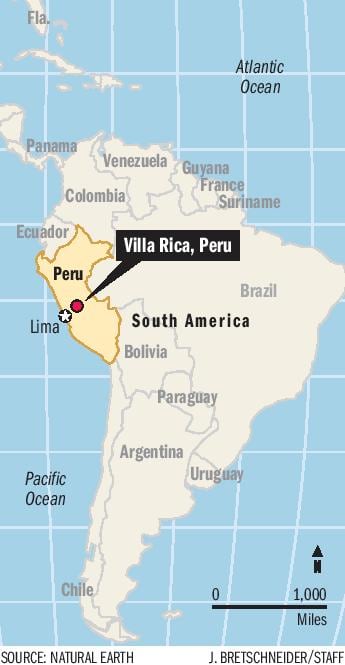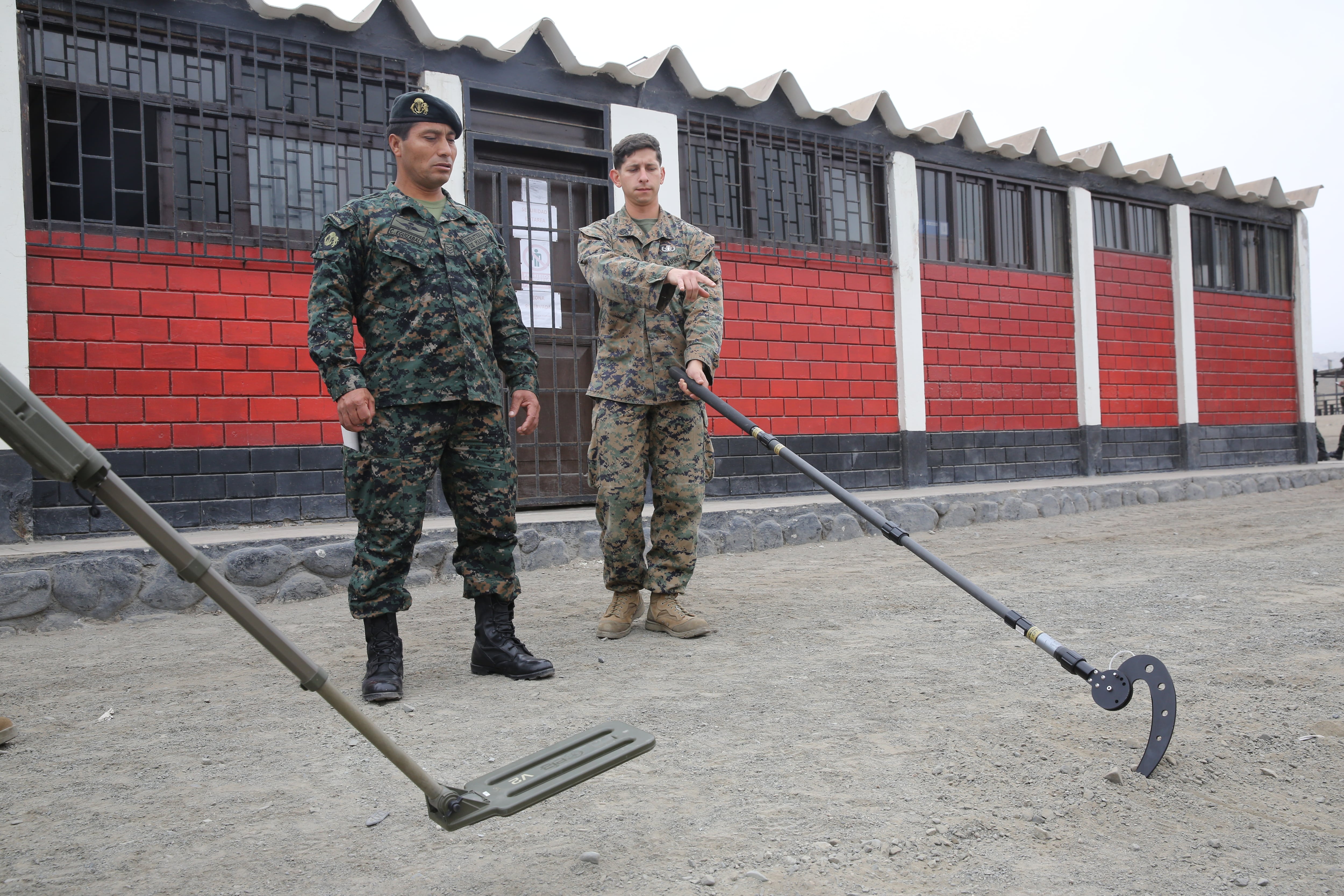The hard-fought combat lessons of Iraq and Afghanistan are being used in the mountainous jungles of Peru, where U.S. Marines have been helping military forces battle insurgents and drug traffickers.
A small Marine Corps Forces South security cooperation team returned to the U.S. in late November following a six-week training mission in Villa Rica, a district in Peru's central Oxapampa province. It's a mountainous area filled with dense jungle terrain, similar to that in the VRAEM — a Peruvian region where multiple river valleys meet that remains a stronghold for a local insurgency group called the Shining Path. Peruvian marines have an ongoing fight against the group, which has made a resurgence in recent years since they've partnered with drug cartels in a country that is the top global producer of cocaine.
The Peruvians have turned to Marines for counterinsurgency tips to fight these local threats. Adm. Luis De La Flor Rivero, the commandant of the Peruvian marine corps, told Marine Corps Times that combating the insurgency and cartels in the VRAEM was their No. 1 priority. Every six months, he deploys about 600 of his marines there.
In a move similar to what Marines saw during the surges in Iraq and Afghanistan, De La Flor Rivero said he's working to increase the size of his force from 3,500 marines to 6,000 in order to boost his troops' dwell time between deployments. As more marines are sent to fight in the VRAEM, the training they conduct with Marines is vital, he said.
Gen. John Kelly, head of U.S. Southern Command, visited the VRAEM in September to discuss with leaders how the U.S. could better partner with the Peruvians to exchange combat knowledge. Kelly told Marine Corps Times during an interview in Lima that the Peruvians were interested in countering a growing use of improvised explosive devises insurgents and cartels use to target their troops.

South America
Photo Credit: Staff
De La Flor Rivero said the insurgents are constantly developing new IED techniques, but through knowledge, his marines can better combat the threat.
"What a better way to do it than by joining the experiences our marines face in the VRAEM with what Marines experienced in their conflicts," he said. "By putting them together and exchanging those ideas, we increase our knowledge of the problem and find better ways to prevent this type of weapon."
Gunnery Sgt. Tim Lynch, an explosive ordnance disposal technician, said he worked with the Peruvians to help identify and deal with the types of IEDs they're likely to encounter on their deployments. The threats they face include a mix of things Marines have seen around the world, including booby traps that maimed and killed troops in the jungles of Vietnam.
Lynch said the terrain was the complete opposite of what Marines were used to in Afghanistan or Iraq, and it presents unique challenges for the Peruvians. They travel with machetes and hack their way through the vegetation, which can be time consuming. But taking shorter, more traveled routes means they're more likely to counter IEDs, he said.
They trained with about 120 marines soon headed to the VRAEM, and about 50 Peruvian commandos. Lynch said the commandos have EOD techs that are trained to deal with the treats, but the info was new for a lot of the marines.
In September, Marines with Special Purpose Marine Air-Ground Task Force-South, a unit that sailed around South America aboard the amphibious assault ship America, taught the Peruvians another factor related to IEDs — combat lifesaving methods.
"With the combat experience we've been through, we taught them how to control a hemorrhage — things that are going to save lives," Hospital Corpsman 1st Class Clarence Perry said. "They deal with infection because of the jungle environment, so they wanted to know how they can use plants from the grounds around them."
Perry said the Peruvians don't have access to the medical gear Marines and corpsmen carry, so they wanted to learn about how they can use their materials to help save marines.
"They don't always have litters to carry their patients so they taught us some carries and how to use uniforms to improvise and get your partners back to the safe zone," he said.

A Marine explosive ordnance disposal technician shows a Peruvian marine how to search for improvised explosive devices. IED attacks are on the rise in the central part of Peru where local marines fight cartels and insurgents.
Photo Credit: Cpl. Christopher J. Moore/Marine Corps
Staff Sgt. Edgar Alvarado, a mountain warfare training instructor who just returned from Villa Rica, said the terrain Peruvians deal with makes good, sturdy gear vital to extract injured marines. So he showed them how to make sure the ropes they use for rappelling and creating bridges will hold.
"I told them to think about this: 'When does a rope go bad?' " he said. "When do you lose faith in a rope — because you're putting life on it."
Alvarado said seeing the Peruvians operate in the jungle terrain gave him ideas about how Marines' conduct mountain warfare training. The Peruvians are innovative, he said, and show that there is more than one way to do something. He said he plans to share some of the tips with his chain of command for training Marines to operate in mountainous terrain.■



